Lucius Domitius Ahenobarbus Nero
CommonName: Nero
FullName: Lucius Domitius Ahenobarbus Nero
Reign: 54-68 AD
Title: Emperor
Born: 37 AD
Died: 68 AD
Relationship: Son of Agrippina Junior
Nero, born Lucius Domitius Ahenobarbus, belonged to one of the most
ancient Roman patrician families. His great-grandfather had been that Domitius
Ahenobarbus who had commanded fleets for all sides in the wars leading
up to Actium. His father, Gnaeus, had a bad reputation for gratuitous cruelty
and dishonesty, being condemned (justly, for a change) under Caligula,
but was saved by Caligula's death,
Nero was adopted by Claudius, and succeded to the throne when only seventeen.
His attitude was typical of unruly teenagers who resent restraint; but
in his case an entire empire depended on his will. As it turned out his
will was to be a singer and poet; and with an entire empire as audience,
he indulged himself to the full. Indeed, one of the jibes made against
him by the British rebel Boadicea was that the Romans were "slaves to a
kithara-player, and a poor one to boot".
Able to idulge his whims without scruple, he objected to restraint.
His mother wanted to control him; he eventually had her murdered. His first
attempt, using a ship built to fall apart at sea, was foiled because she
was a good swimmer; he followed it up with a more normal assassination
at the hands of a soldier. This crime shocked public opinion, but not enough
for anyone to do anything about it.
What did incite active outrage was his wastefulness, since the money
to pay for it all had to be raised somehow. He tried all the usual tricks;
whether looking for buried treasure or condemning citizens on bogus charges
and confiscating their property. He even murdered his old aunt Domitia
Lepida to steal her estate.
This reign is notable also for the first definite mention of Christianity
in secular sources. In 64 AD a great fire destroyed a large part of Rome.
Rumour had it that Nero had been singing one of his poems while enjoying
the spectacle; rumour also had it that he had set the fire himself to help
him acquire more land for his ever-growing palace. He therefore looked
around for somebody to blame. The Christians were an easy target: as followers
of a mysterious Asiatic cult, which was not simply ethnic, and which was
well known, but not so numerous to pose a threat of revolt, they were blamed
for the fire and targeted for punishment.
Eventually the provincials tired of his actions, and a series of revolts
disturbed the course of his antics. Vindex, governor of Gaul, revolted,
and the legions which crushed the revolt then decided to support their
own candidate, which turned out to be Vindex's colleague Galba. Nero dithered
and planned dramatic gestures, then gave himself up to despair and stabbed
himself to death. "What an artist is here perishing" was his self-styled
epitaph; the non-survival of any of his compositions indicates that not
everybody agreed.
---------------------------------------------------------------------------------------------------------------------------------------------------------
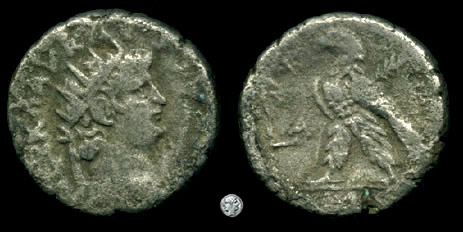
Nero, billon tetradrachm, (10.50g) Alexandria, Egypt, Radiate head
right. / Eagle standing left, grain ear behind, LA before. F
---------------------------------------------------------------------------------------------------------------------------------------------------------
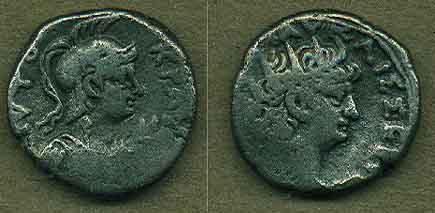
Nero AR tetradrachm, Year 66-67, Roma. BMC 162.
---------------------------------------------------------------------------------------------------------------------------------------------------------
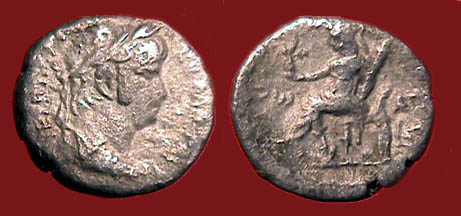
ROMAN EGYPT. Nero, 54-68 AD. AR Tetradrachm (10.48 gm), yr. 6. Laureate
head / Roma seated holding Victory and sceptre. Köln.141. aVF.
---------------------------------------------------------------------------------------------------------------------------------------------------------
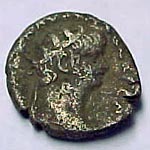
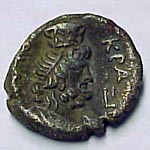
Nero, Roman Empire,A.D. 54-68. This is a Provincial issue. Tetradrachm
of Egypt. Billon tetradrachm, Alexandria, LI=Year
10=63/4 AD, 10.47g. RPC-5274. Rx: Bust of Serapis r. with polos on
head. This type is not listed in Greek Imperial Coins.
---------------------------------------------------------------------------------------------------------------------------------------------------------
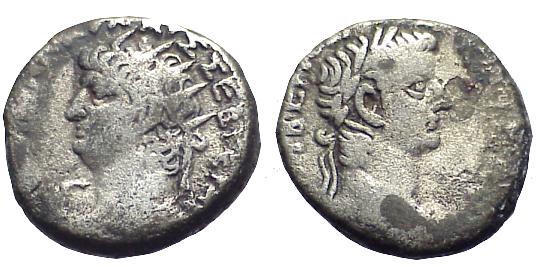
Sear (RPC) 6376 Radiate bust of Nero left. Laureate bust of Tiberius
right. aF/aF - uneven toning, interesting type, two emperors in one.
---------------------------------------------------------------------------------------------------------------------------------------------------------
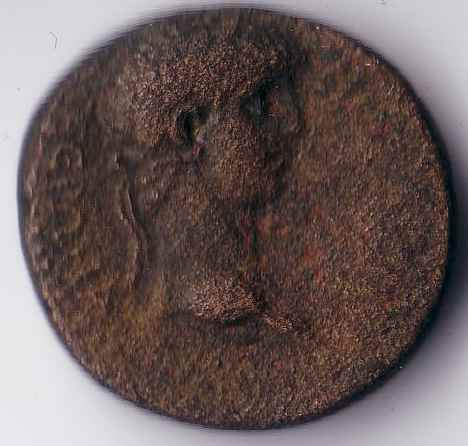
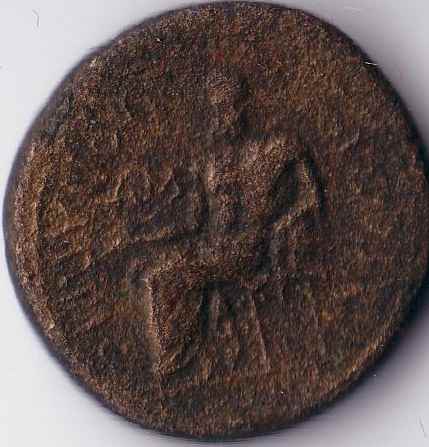
Nero AE18 of Smyrna in Ionia. NEPOWVA CEBASTOV, laureate head right
/ Z-Mu-U in field, AU (monogram) GESSIOS FILOPATRIS around Zeus seated
holding scepter. BMC 285.RPC 2480
--------------------------------------------------------------------------------------------------------------------------------------------------------
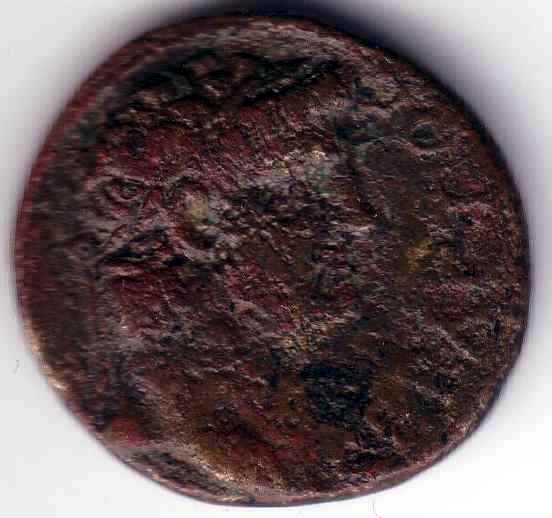
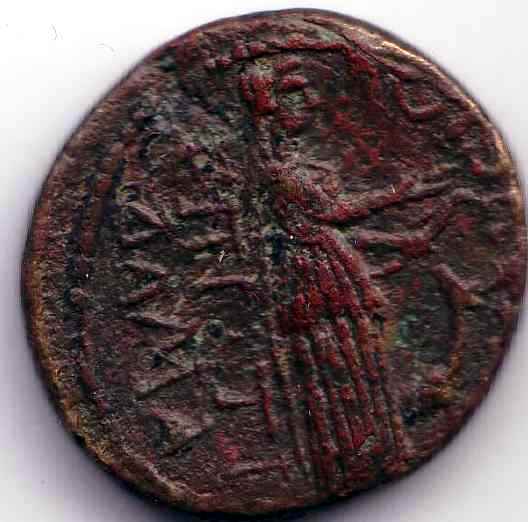
Nero of Ionia, Miletus, leaded bronze 22, CEBACTOC Laureate head
right Cult statue of Artimis Pythia right, Holding patera and bow behind,
Stag, nice pedigree. It is RPC 2715, and is ex-Weber> > (6058), ex-Lindgren
(A517A).
RPC shows only 10 examples known




